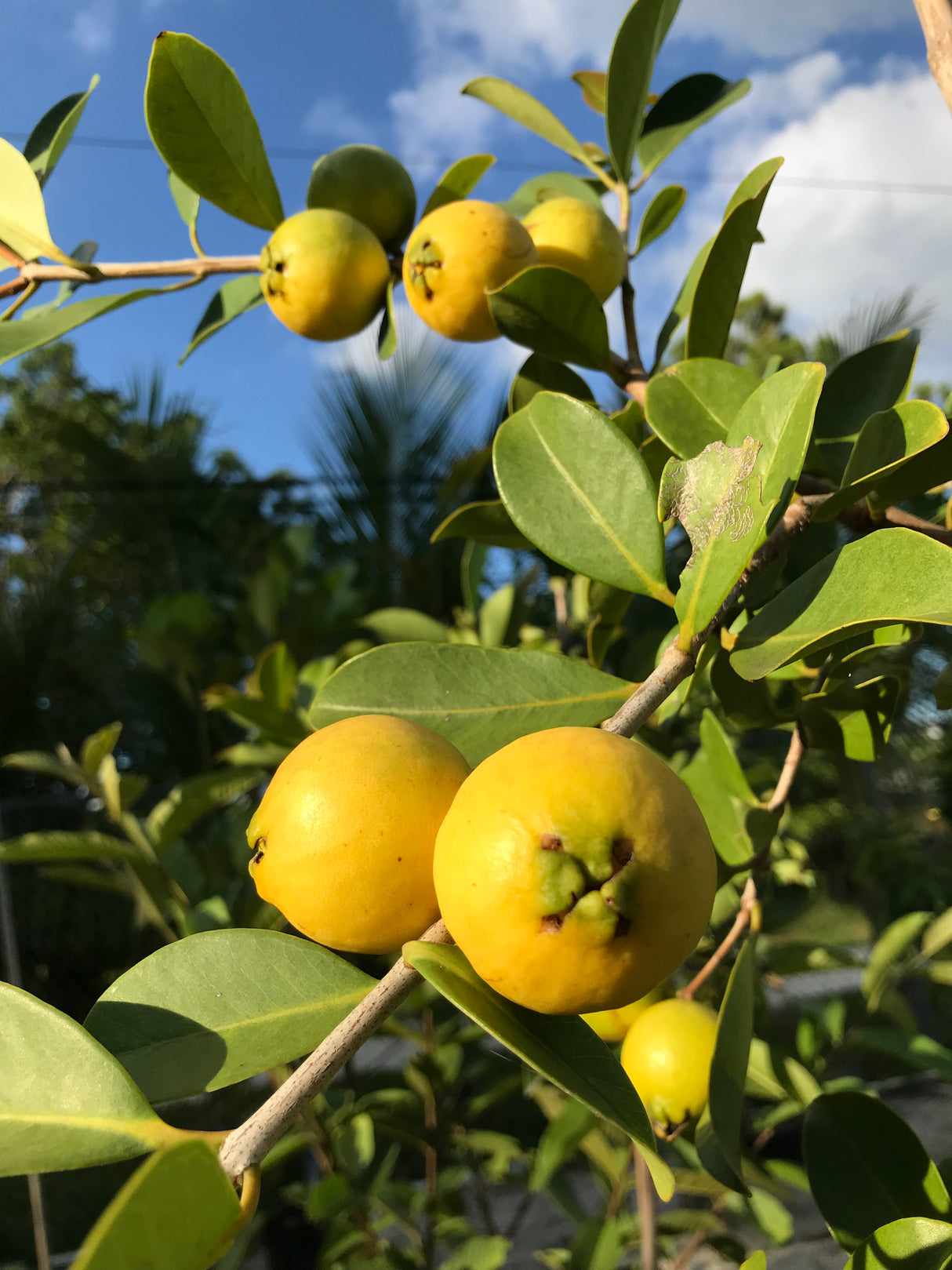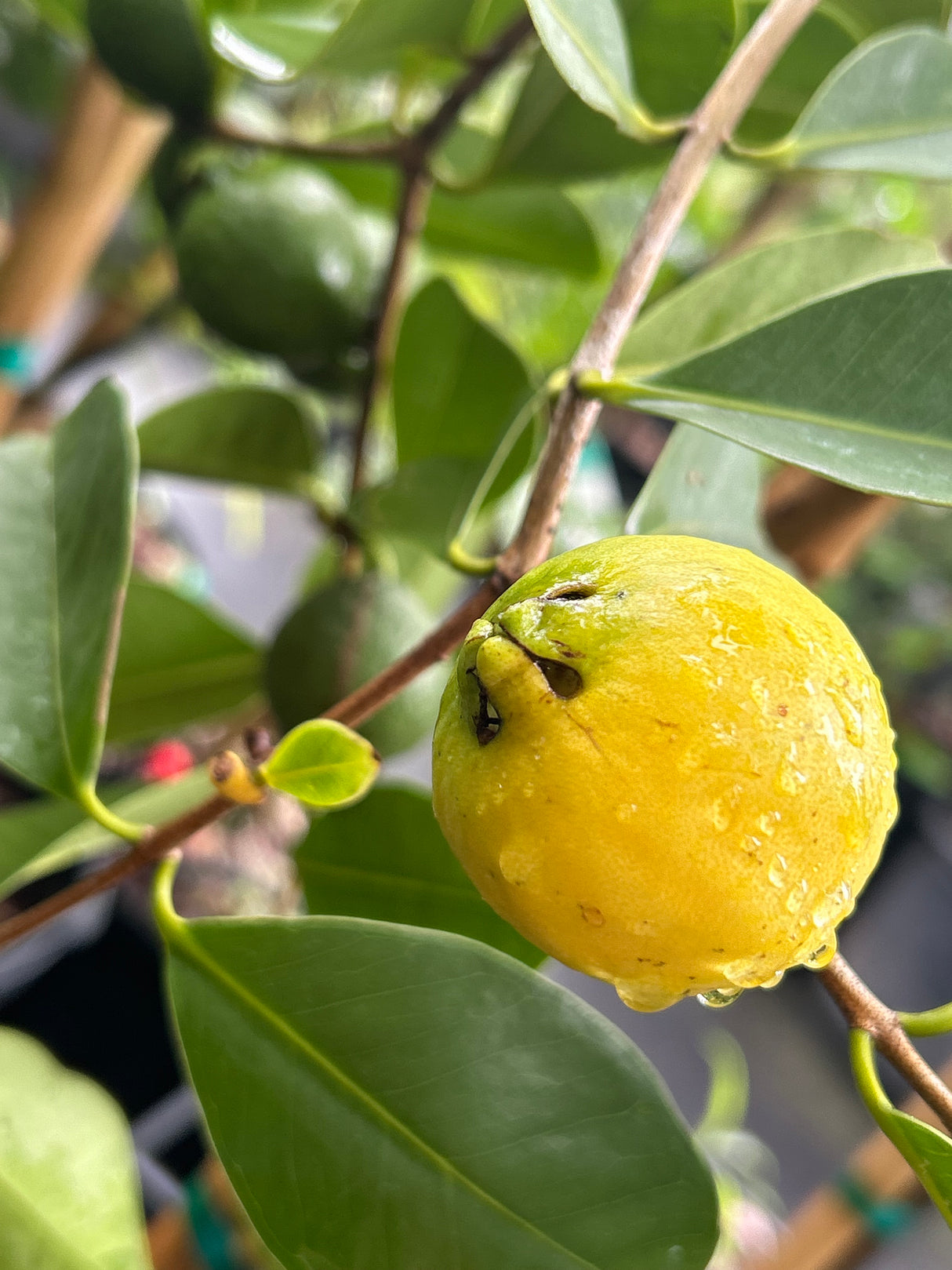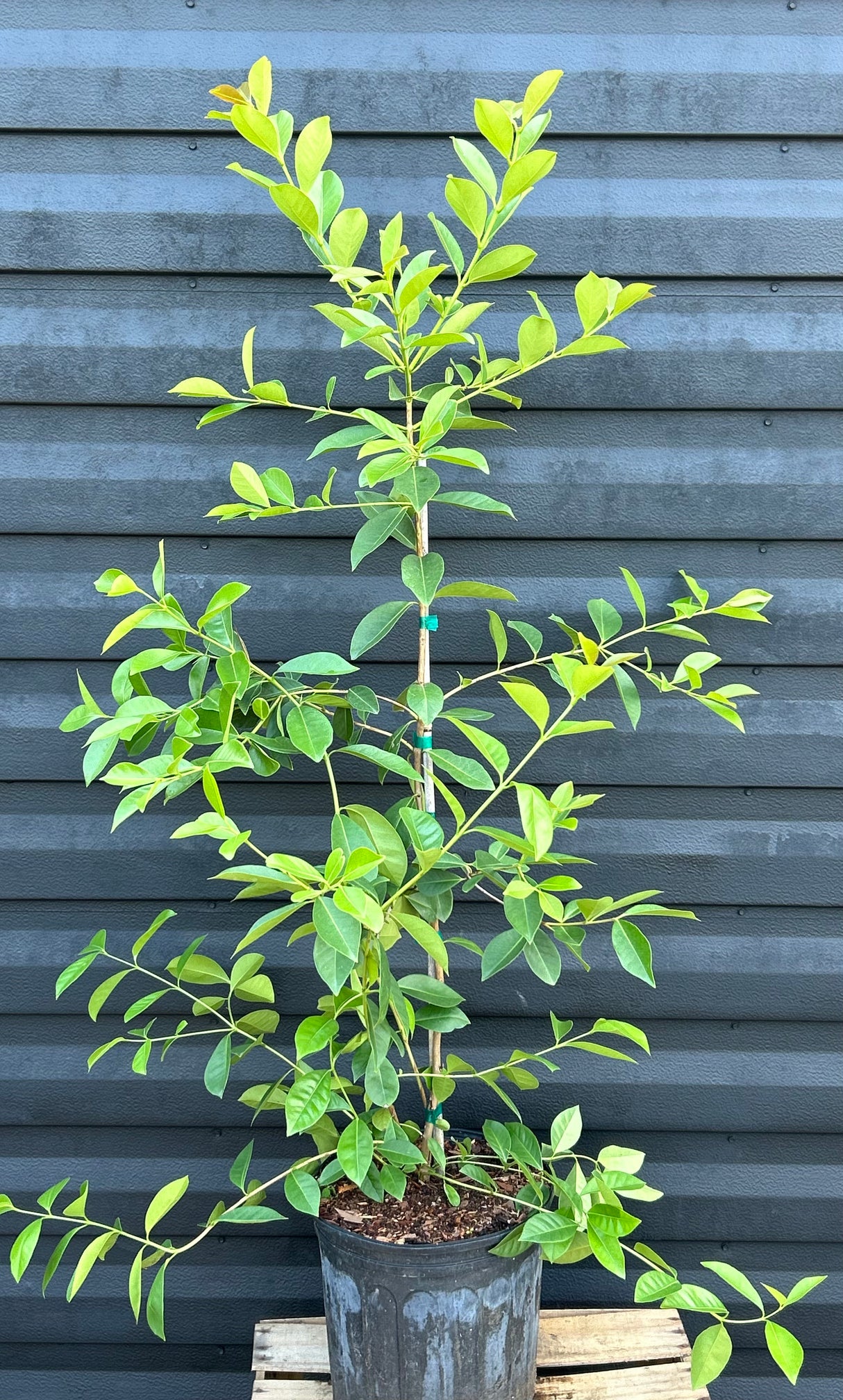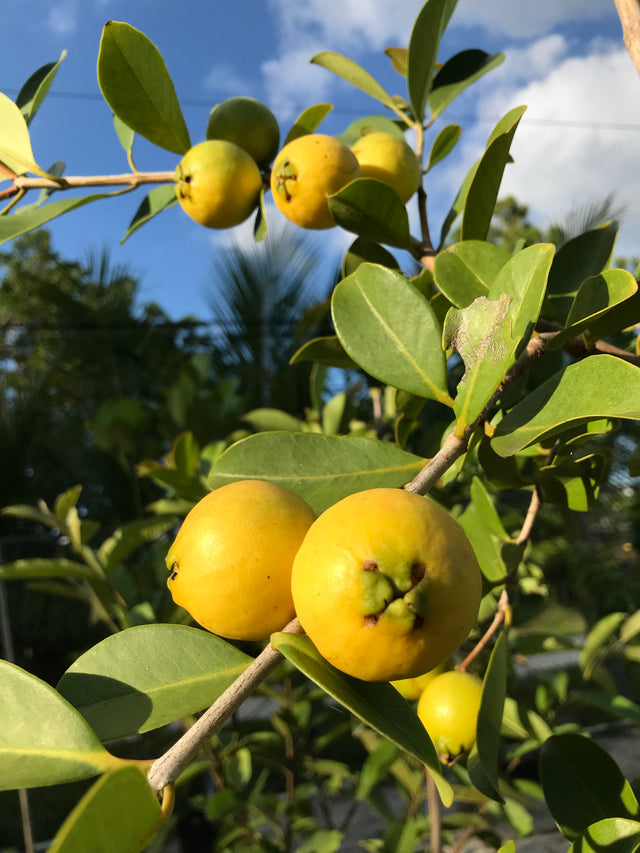Cattley Guava Tree 'Lemon'
Cattley Guava Tree 'Lemon' - 1 Gallon is backordered and will ship as soon as it is back in stock.
Fruit Tree Pot Size Reference Guide
Fruit Tree Pot Size Reference Guide
Display general product information or specific product information using metafields.
We sell grafted fruit trees in various sizes, ranging from young 3-gallon plants all the way up to 25-gallon and larger, mature trees.
As a general rule of thumb, here’s what you can expect from each size:
3 gallon: Will take an average of 2-3 years before harvesting your first crop. Trees are small and may be just a single stem, or just starting to develop their first branches. Typical height is between 2-4 feet.
7 gallon: Will take an average of 1–2 years to produce a crop. Branching structure has started to develop, and trunks are between ½ to 1 inch thick. Typical height is between 3-6 feet.
15 gallon: You can usually expect fruit within a year of planting, and some trees are already fruiting at this size. Branch and canopy structure has taken shape and the tree is starting to grow wider. Trunks are between 1 to 1-½ inches thick. Typical height is 5-8 feet.
25 gallon and larger: These are mature trees, and most are ready to produce fruit or have already produced. They have been pruned and shaped multiple times at this point. Trunks are about 2” thick or larger. Typical height is 6-10 ft.
PLEASE NOTE: These descriptions are generalized - Some species of fruit trees are very quick to produce, and others take longer. For example, mulberry trees can start fruiting at a very young age, even as small as a 3 gallon. Mango, avocado, or sapodilla trees will take longer. Each species grows at a different rate and will take varying lengths of time to establish, and even different cultivars can be more precocious (quick to produce) than others.
Order Pick Up/Delivery Info
Order Pick Up/Delivery Info
When you select the “Nursery Pickup” option at checkout, please allow up to 24-48 hours for your order to be prepared for pickup. Once your order is ready for pickup, we will email you to let you know that it is ready. Plant orders may be held at the nursery for up to 10 days. If orders are not picked up within this time frame, a 15% restocking fee will be charged. If you are unable to pick up your order, please contact us to request a quote for delivery.
If you prefer to have us deliver your plants, select "Ship" at checkout and choose the "Local Delivery" option. (This option will not be visible if your order is below the $300 minimum for delivery). Delivery cost for orders within 20 miles is a flat rate of $50. If your address is further than 20 miles, we will invoice you for the additional mileage at $3/mile upon fulfilling your order. Deliveries are typically scheduled on Tuesdays and Wednesdays. Please include your phone number and any delivery instructions in the order notes.
Responsibility of Care
Responsibility of Care
Return Policy
Return Policy
All sales are final at the time of payment. Please be sure that you are happy with your order before submitting. Returns or exchanges will only be made under exceptional circumstances, at our discretion, and are subject to a 15% restocking fee. Once plants have left the nursery and are no longer in our care, they cannot be returned.
Inventory Disclaimer
Inventory Disclaimer
Every day, we take great care to maintain our inventory and make real-time updates as plants come and go. Because our inventory is constantly changing, and because in-store and online purchases are being made simultaneously, it is possible for a short window to occur when an item is physically sold out, but listed as in-stock on this platform. This is rare, but in the case that it does happen, we will contact you right away and either refund the item or offer an alternative. Thank you for your understanding!
Additionally, we add new plants to the nursery on a weekly, sometimes daily basis. Check back often to see what’s in stock, and click the “Notify me when this item is available” button to get updates when your wish-list items are restocked!
Description
Description
Lemon Cattley Guavas have a slightly larger fruit, and can be more productive than Strawberry Guava. The tree looks very similar but the foliage is a touch lighter in color.
____________________________________________________________________________________________
Latin name - Psidium spp.
Guava, or Guayaba in Spanish, is a fruit known around the world and most commonly its pulp is used to make sauces, jams, pastries and baked goods. Guava juice and milkshakes are popular in Latin cuisine, and the fruit is also eaten out of hand or in fruit salads. They are quite aromatic, and sweet with a slight subacid flavor. Some Guavas have a flavor similar to lemonade, others closer to apple. The fruit is full of vitamin C as well as other healthy vitamins and minerals.
Guava trees are very productive, fruiting several times per year and beginning production at a young age. Most of the harvest occurs in Spring and Summer, but it’s not uncommon to find some ripe Guava fruit on your tree in the cooler months. The common Guava, which we refer to as “Tropical” is the species Psidium guajava. It is a fast growing, small to medium size tree with lush, light green foliage. Guava trees often have multiple trunks but can also be pruned to a standard shape. The flowers are showy and fragrant, and fruit matures quickly, ready to pick in about 2-3 months. Guava trees grow best in full sun, and take well to heavy pruning. They are fairly drought tolerant but benefit greatly from irrigation, especially when bearing fruit.
We also grow Psidium cattleyanum, or Cattley Guava. This species is a compact and ornamental tree with smaller, glossy leaves. Cattley Guava fruit are about the size of a key lime or slightly larger, with a sweet aroma and flavor. We recommend Cattley Guava for those with smaller spaces, HOAs, or container growing. They are productive many months of the year, with most fruit ripening in Spring.
Guava trees do best in full sun, but will adapt to semi-shaded conditions, particularly the Cattley Guava. They can withstand dry weather when established, but we recommend irrigating and mulching your trees for best results. Establishing quickly and producing reliably, Guava trees are a wonderful addition to your Food Forest and will fill your harvest basket with their abundant fruit>
___________________________________________________________________________
Size: P. cattleyanum– 8-12’ tall x 6-8’ wide
Sun Requirements: Full sun to part shade
Cold Hardy: P. cattleyanum– 22 degrees
Harvest Season: Spring/Summer mostly
Watering requirements: Drought tolerant, benefitting from supplemental watering during fruit bearing periods.
Food Forest Layer: Sub Canopy, Understory







